You can’t physically see the pH of a koi pond, but you can definitely see the effects if your pond has unsafe pH levels. Maintaining the correct pH levels in a pond is crucial because pH affects a fish’s stress levels and immune health. In general, koi thrive in ponds with pH levels ranging from 6.5-8.5, with the sweet spot being 7.5.
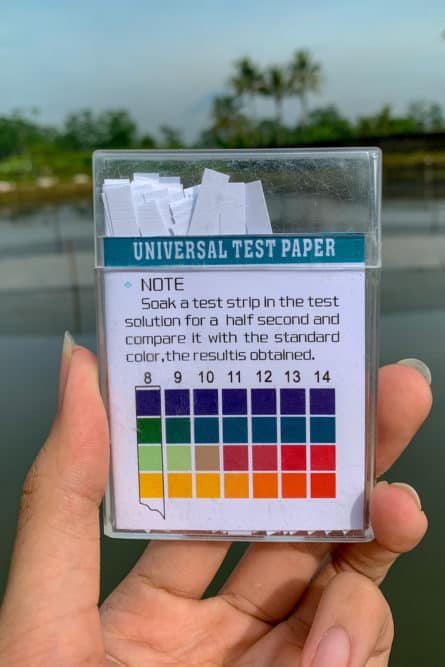
In an ideal world, your pond’s pH scale would consistently stay at 7.5. However, this is nearly impossible because pH levels actually fluctuate throughout the day. Plants consume carbon dioxide during the day, which raises pH levels. When plants aren’t photosynthesizing at night, there’s a decrease in pH as the level of carbon dioxide increases.
Therefore, I’ve created a guide to help you easily find all the information you need to ensure that your precious koi are swimming in waters with safe pH levels. I’ve researched proven and safe methods for lowering pH.
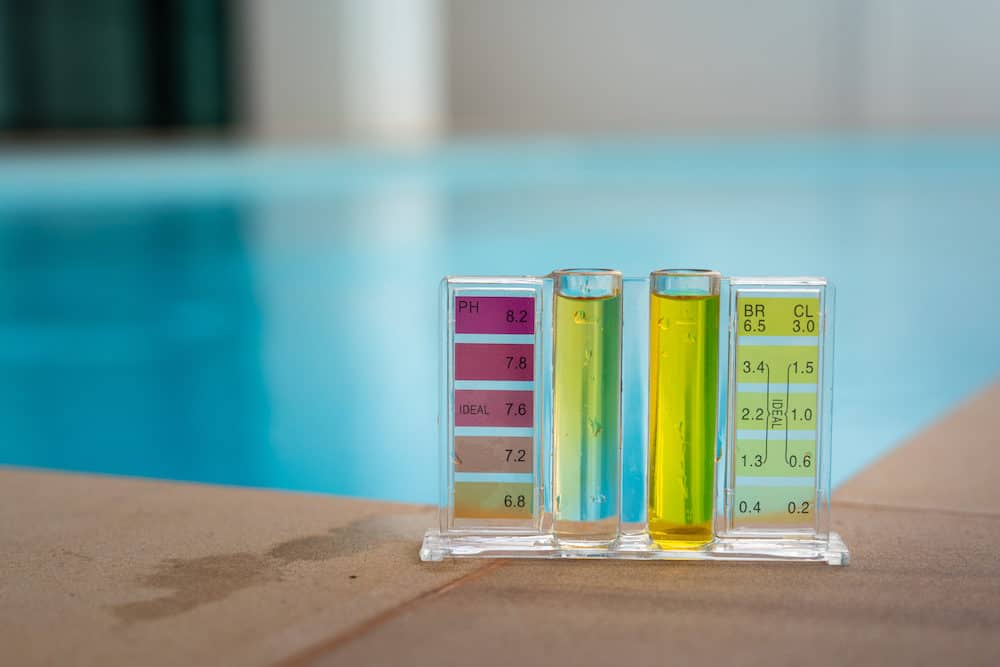
We’ll discuss the following methods to lower the pH level of your koi pond:
So, keep reading to learn how to lower pH in koi ponds safely. I’ll also provide some responses to frequently asked questions regarding pH levels from many koi owners.
One of the first things you should do is check your pond’s carbonate hardness (KH or CH). KH measures the amount of dissolved bicarbonate and carbonate ions in your water. Simply put, these components stabilize and keep your water from experiencing sudden fluctuations in pH levels.
For koi ponds, the ideal KH range is 75-200 mg parts per million (ppm). If your pond has lower amounts of KH, you’ll want to use a stabilizer to increase the amount of dissolved bicarbonate and carbonate ions to help stabilize the pond’s pH levels.
You can increase the KH levels by using baking soda or a commercial stabilizer. The easiest method is using commercial stabilizers because they come with instructions and provide more consistent results.
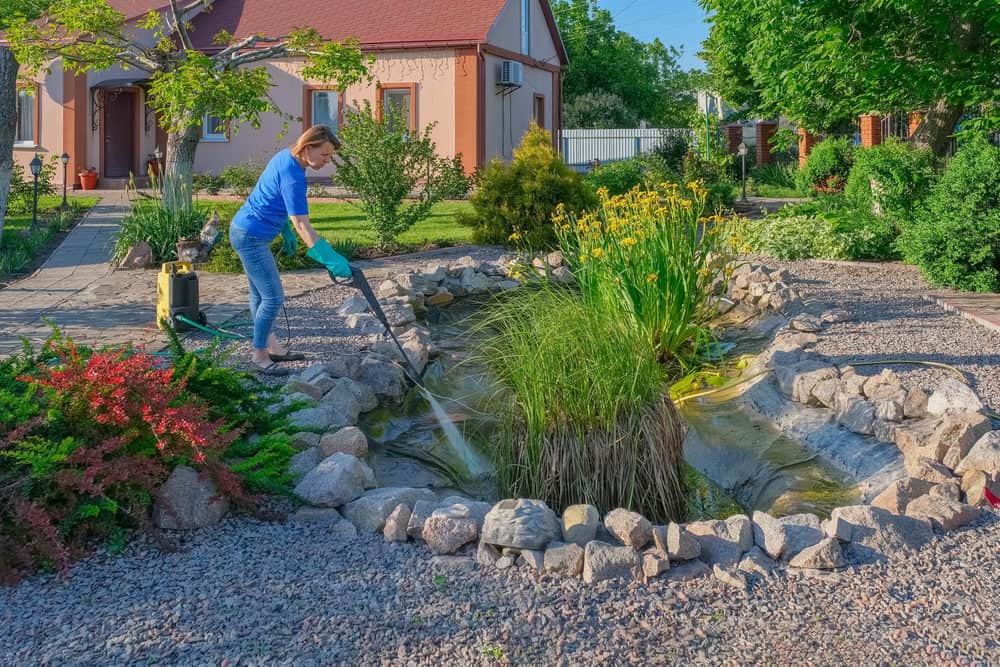
It’s important to gradually reduce pH levels because sudden water change can harm and even kill your koi and other pond fish.
One of the best natural ways to lower pH levels is to remove some of the current pond water and replenish it with fresh water. Make sure to test the new water so that you have an accurate reading of its composition.
Before you add tap water to your koi pond, use a conditioner to treat it. The last thing you want to do is introduce more issues to the pond, such as heavy metals and too much chlorine.
After treating the water, start gradually replacing the old pond water with the new pond water. You’ll want to start by taking out between 10%-20% of the old pond water. After you add the first round of fresh pond water, make sure to test the water.
If you notice that the pH levels have lowered, keep replacing the water every 24 hours.
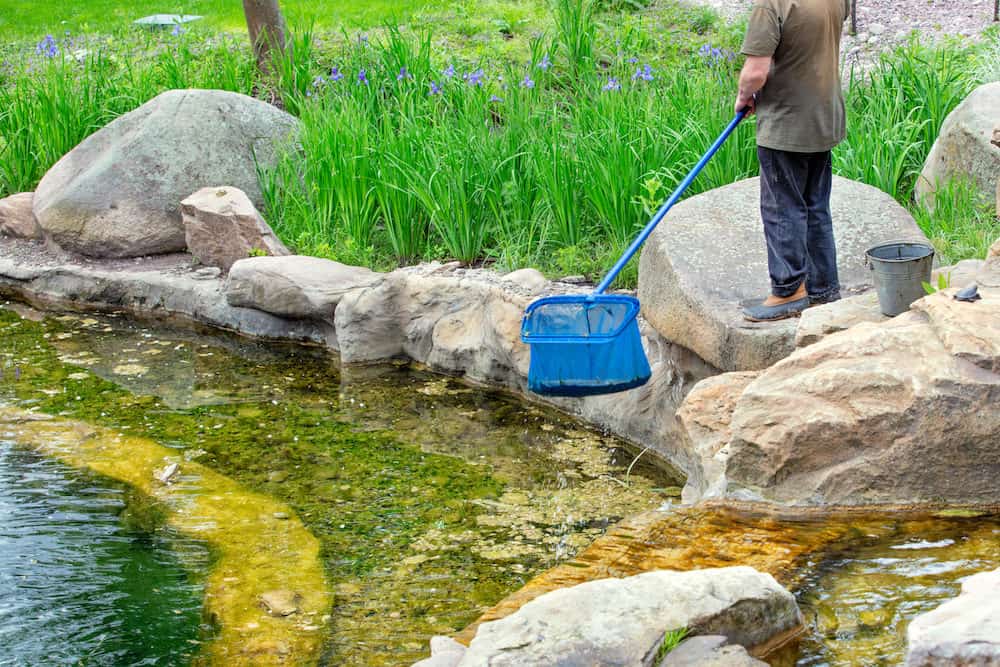
Algae is another culprit of high pH. For algae to photosynthesize, they need to eat up carbon dioxide. Carbon dioxide reacts with water and develops carbonic acid, which increases the water’s acidity and lowers pH.
If your pond is looking particularly green or has experienced an algae bloom, try removing the algae with an algae net or skimmer. Wait until a day has passed to test the water to see if algae removal has affected the pH levels.
You can also control algae concentration by increasing the movement of the water with an aerator or waterfall. A natural method for reducing algae is placing surface plants, such as lilies, in the pond. These types of plants will block sunlight so that algae can’t photosynthesize.
If the algae are completely uncontrollable, then you can consider using an algaecide. However, since algaecide contains harmful chemicals, you’ll want to use it as a last resort and with great caution.
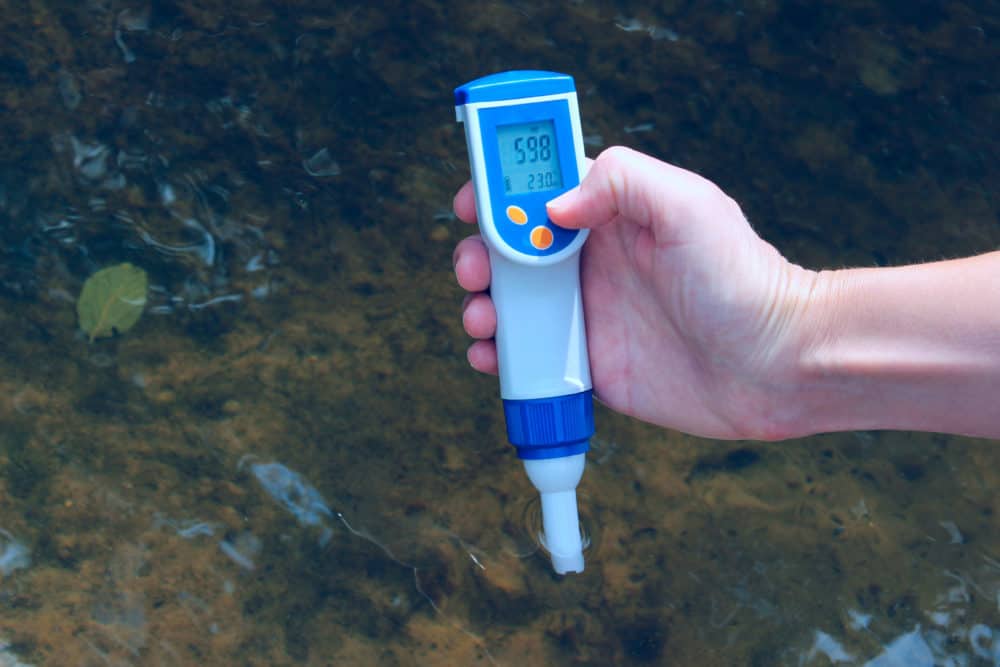
Another method to lower pH is to use a pH stabilizer. There are many koi pond pH buffers available for purchase. Some specifically raise pH, while others lower pH. Make sure to read the labels carefully before purchasing and follow the instructions so that you can safely change the pH levels without harming your koi.
Using white vinegar is a safe method for lowering pH levels if you use it carefully and in moderation. In general, you should use a ¼ cup of vinegar for every 500 gallons of water.
If you want to use vinegar, draw out a bucket of water from your pond. Pour the appropriate amount of vinegar into the bucket and mix thoroughly. Then, pour the vinegar-mixed water into the pond. You don’t want to ever directly pour vinegar into your koi pond because contact with concentrated amounts of vinegar can harm your fish.
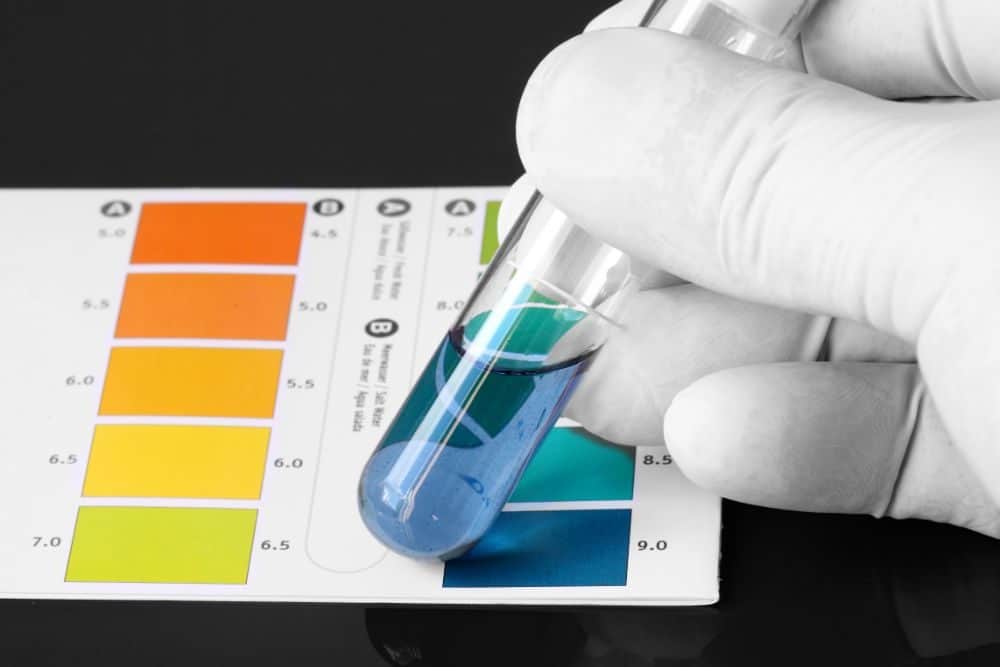
Wait at least 12 hours before testing the pond’s pH levels. If you see that the pH level has risen slightly, repeat the process until you reach a healthy pH value.
Now that you know how to lower pH in koi ponds, here is some more essential information you’ll need as you’re working on lowering ph in koi ponds.
It’s essential to have a water test kit at hand at all times. There are so many factors in pond water that can affect the well-being of your koi fish, so it’s important to monitor the water regularly.
Along with testing pH levels, pond water test kits can detect the following:
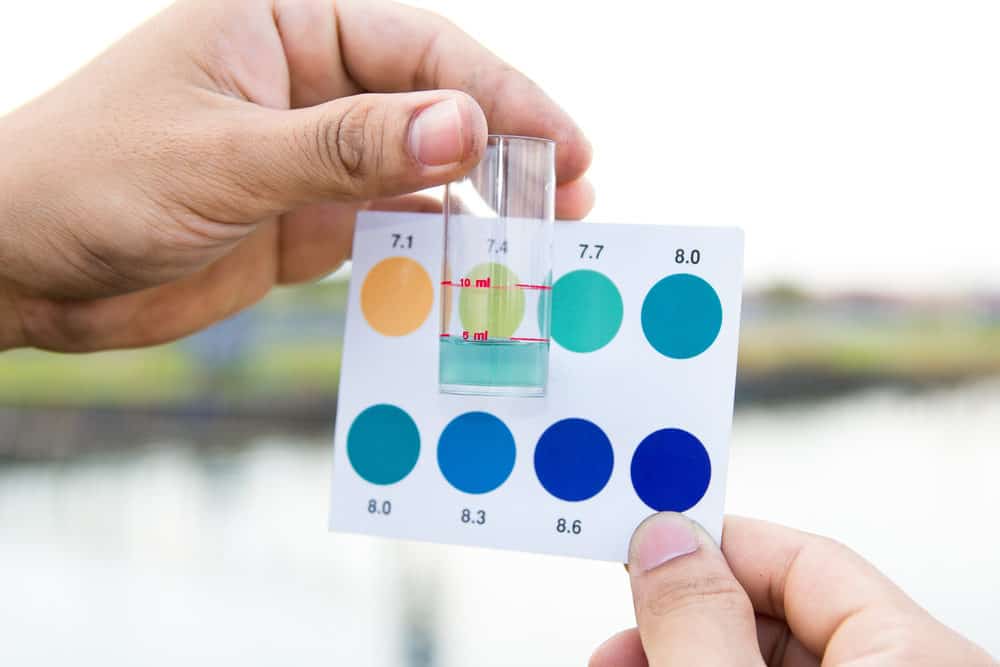
You can certainly use a pH strip to find the pH level of your pond. However, using a water chemistry test kit that measures multiple components will help paint a better picture of what’s going on with your water.
For example, if you use a water test kit that also measures KH, then you’ll be able to see if your pond’s pH fluctuations are due to a low level of KH. Then, you won’t necessarily have to add a pH stabilizer or vinegar to the water. You can address the KH levels instead.
On a molecular level, there’s a relationship between the presence of hydrogen ions and pH levels. In short, the concentration of hydrogen ions affects pH. If there’s a higher concentration of hydrogen ions, there’s a lower pH. If there’s a lower concentration of hydrogen ions, the pH is higher.
The addition of acids and bases affects the concentration of hydrogen ions. Acids add hydrogen ions to water, while bases remove them. This relationship is why adding vinegar to pond water lowers pH levels. Algae slows down the production of carbonic acid, so removing them will also allow fewer hydrogen ions to be present, which raises pH.
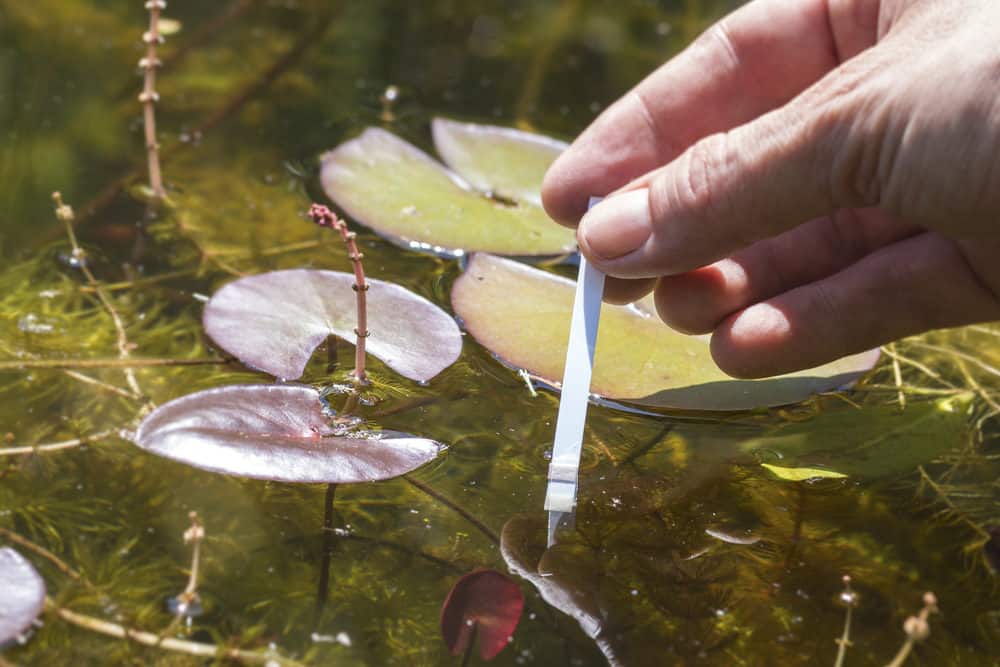
A pH fluctuation level will affect the overall health of koi and can lead to fatal consequences if left unaddressed.
The most common condition that koi will develop from high levels of pH is alkalosis. Alkalosis deteriorates a koi’s health, and the koi will start to display the following symptoms:
The best way to avoid alkalosis is to take preventative measures to lower alkalinity. Regularly monitor your pond’s pH levels so that it never gets to the point of going outside of the safe range of 6.5-8.5.
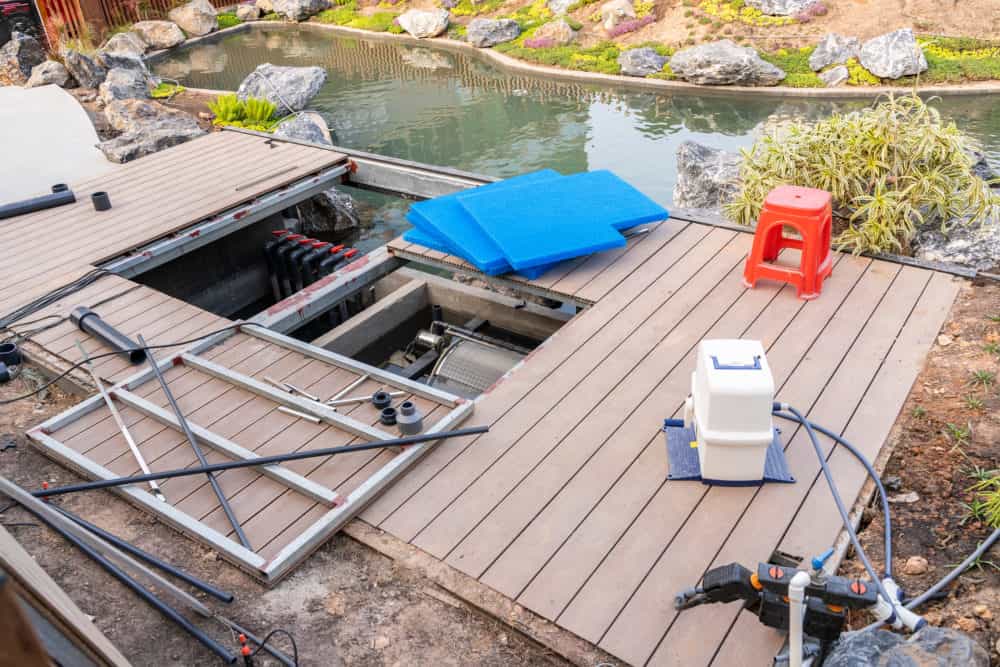
If your pond pH is too high, it’s tempting to fix the issue quickly. However, koi are very sensitive to drastic changes in pH, so making fast changes will do more harm than good. Make sure to make gradual changes and do a pH adjustment to lower the koi pond pH level.
Using baking soda isn’t ideal as a pH reducer. Baking soda is an alkaline substance. So, it can raise the pH level of the pond water.
However, baking soda also increases the amount of KH in a pond. As we’ve discussed before, KH helps stabilize pH levels. Therefore, baking soda can indirectly lower a pond’s pH level to a healthy number.
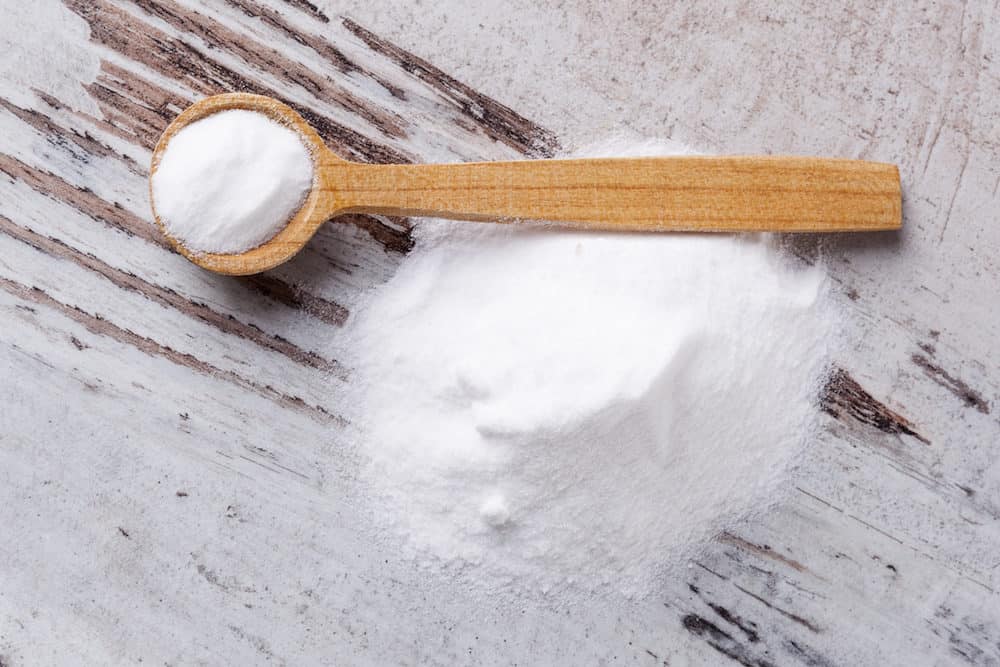
In general, adding one cup of baking soda to every 1,000 gallons of water will raise the KH to 150 ppm. If you want to increase your pond’s pH, add one teaspoon of baking powder for every 10 gallons of water.
Also, just like how you shouldn’t add vinegar directly to your pond, you don’t want to add baking soda straight into the pond. Mixing baking soda in a separate bucket of pond water is especially important because it’ll take some time for the baking soda to dissolve. You want to make sure that it dissolves completely before adding the mixed water into the rest of the pond.



